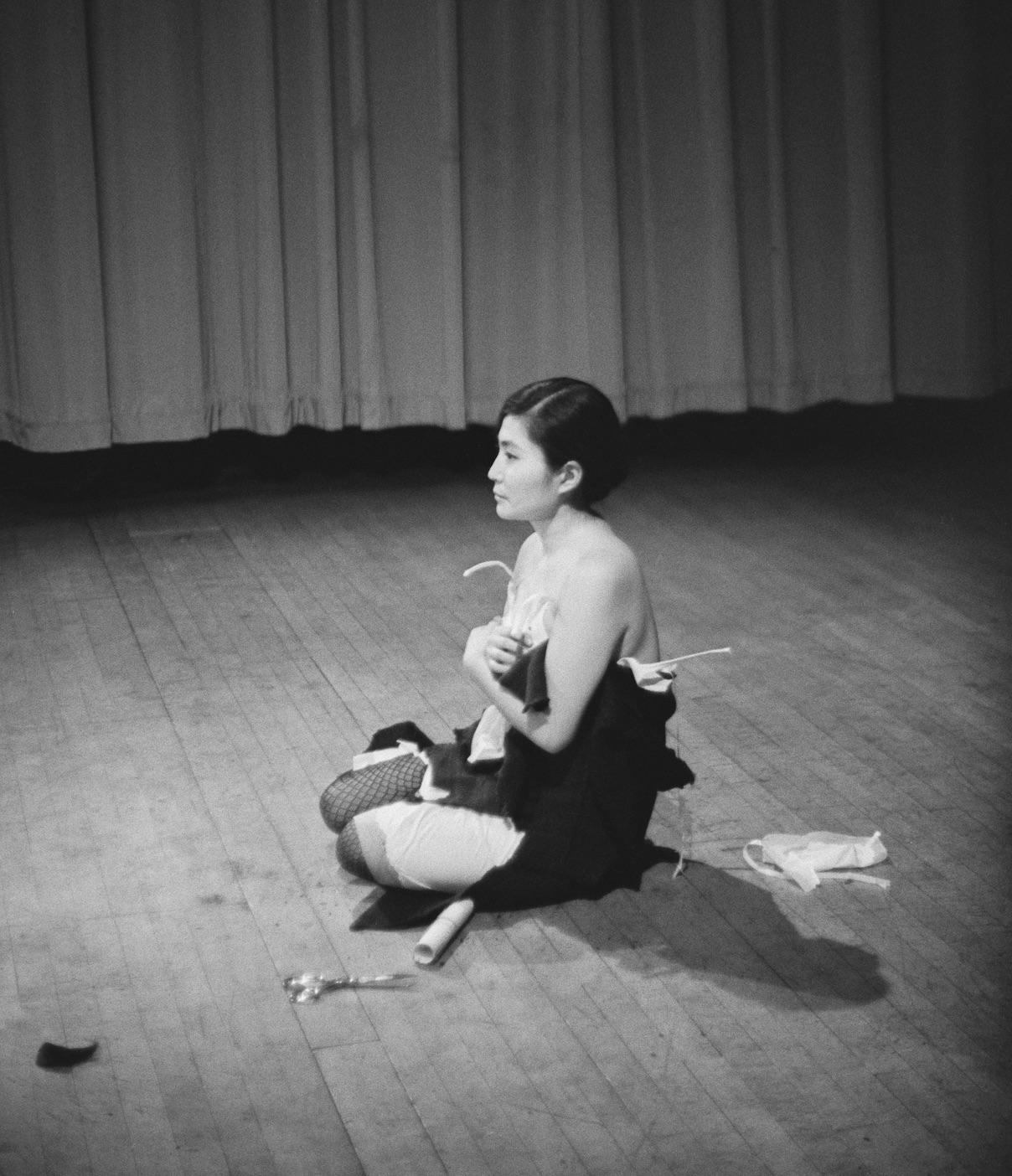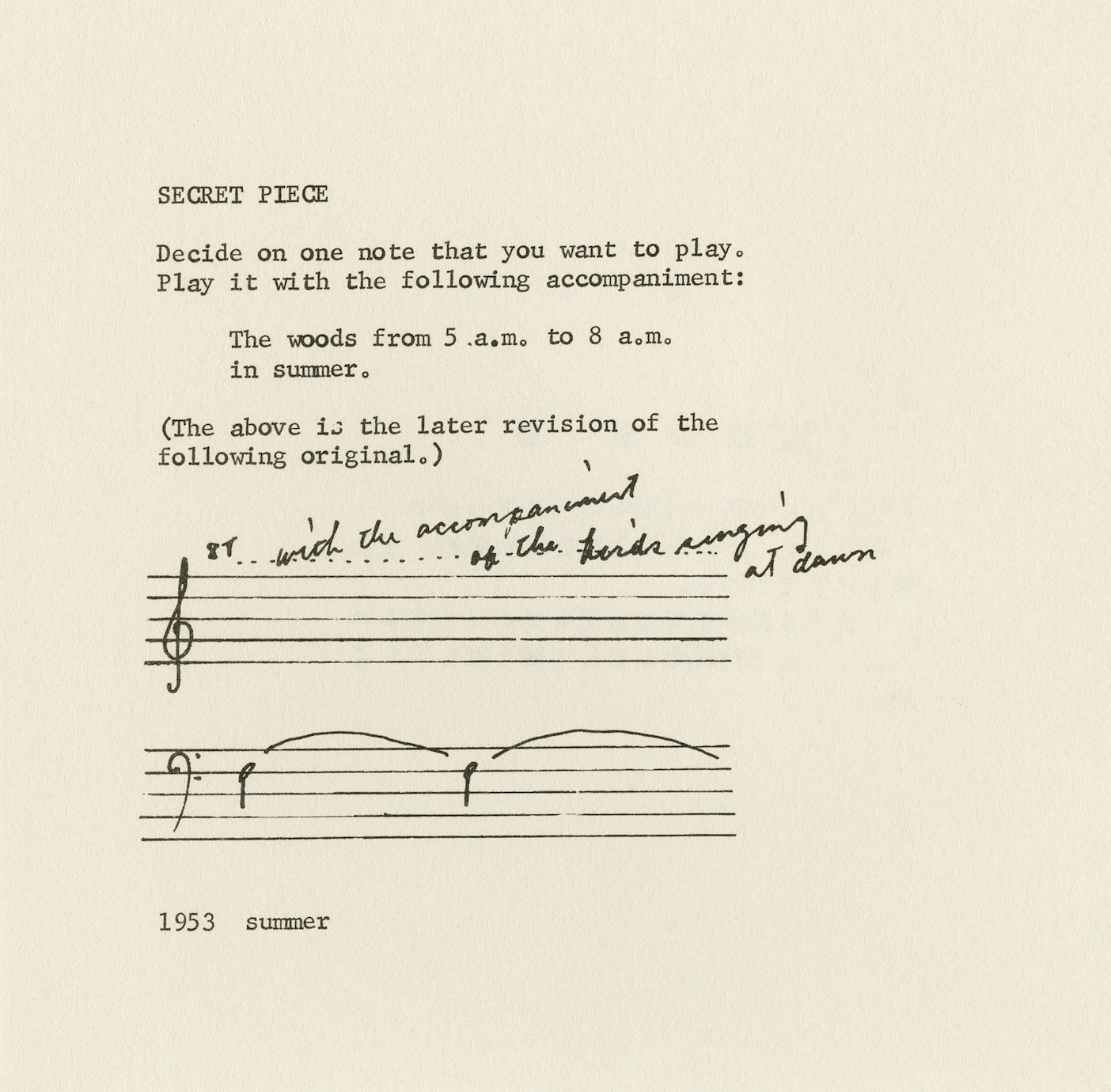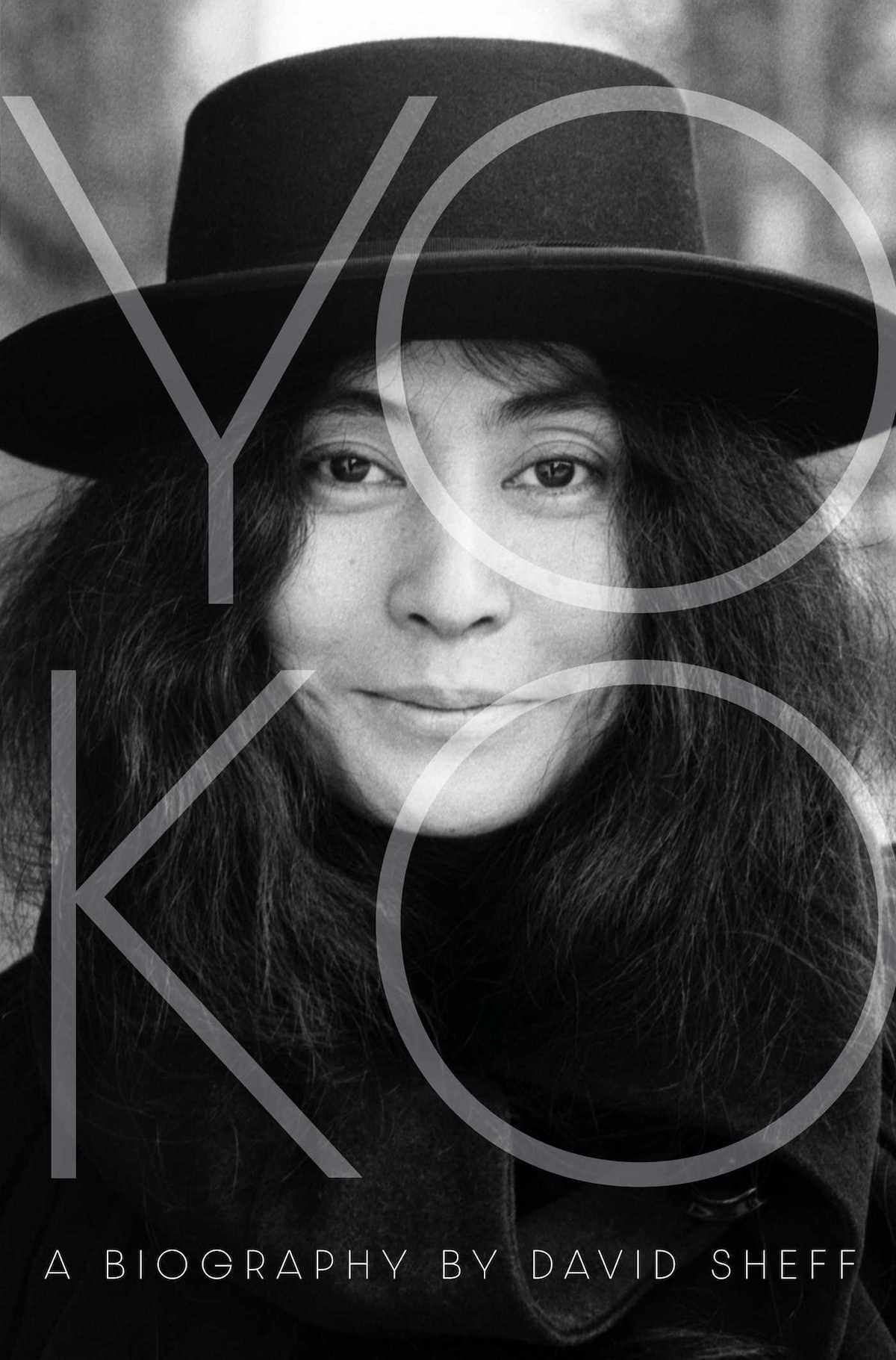In 1965 Yoko Ono staged a performance called called the Carnegie recital in New York Cut piece. She was sitting on the ground on stage, dressed in black, her hair gathered. The spectators were called to approach one at a time and cut with a pair of scissors one piece after the other of his dress. Who was there tells that the former did it with hesitated. When it was the turn of some younger guys, they began to do it with taste, cutting large pieces of fabric until they leave it in underwear. When a man cut the straps of the bra, Ono nodded and the curtain fell before the breast was discovered. In Kyoto, where he had staged Cut piece The year before, a man had made the gesture of stabbing it with scissors. In London years later they would have left her naked.
You can interpret Cut piece In various ways, Yoko Ono has done so by re -proposing the performance over the years: a reference to the vulnerability of the women's body, a performance on the importance of the concept of trust, a reflection on submission and domination, a manifesto of giving himself totally to others. In hindsight, it also seems to me the perfect representation of the relationship between the artist and public opinion, which made it metaphorically in pieces. It happened continuously, for decades. She was mostly firm, impassive, immovable in her impenetrability.
It was an impairing struggle despite the hard character, fame and wealth of the artist. It is a story told in new book by David Sheff simply titled Yoko. Sheff knows what he is about. He met Yoko Ono and John Lennon in 1980, when he interviewed them for Playboy. A ten -year friendship was born with the artist. When the journalist found herself in trouble with the drug addict, a story told in the book Beautiful Boy From which the film of the same name is based with Steve Carell and Timothée Chalamet, Ono and his son Sean have given him a hand. He is a family friend, even if for about ten years he has no longer frequented the woman. In the book The point of view Sean Lennon is often present, the artist's strengths are always well highlighted, in short, the gaze is more than benevolent. Sheff, however, also tells the most extravagant sides of the woman's character, fragility, hardness. “Can a journalist tell the truth about a friend?” He wonders. It is an old story, for sure this is the book that closes most to an authorized biography of Ono, for better or for worse.
For years that the Beatlesians are said to be apologies to Yoko Ono. Paul McCartney also understood this, passed from distrust to almost affection for this woman who appeared in the eyes of the western public in the second half of the 60s with some unforgivable defects: she was Japanese, hard, feminist, decidedly weird. At the time it could also be said that it was ugly, without anyone having anything to object. She did not give up an inch, she did nothing to make yourself loved. After tieing himself to Lennon, he became the “Ugly Jap” to shout to go home, a breakdown (the beatle was married to Cynthia Powell, from whom he had had his first son Julian) and a smasher. His presence was irritating, his way of conceiving the unsettling conceptual art for fans who wanted to hear Strawberry Fields Foreverask questions about the triche, see the story of friendship between John and Paul replicated indefinitely.

Yōko Ono during the performance 'Cut Piece' (1964). Photo: Minoru/Courtesy of Yōko Ono
Of the 92 years that Yoko Ono has experienced so far from Mrs. Lennon less than 15, but that bond has remained indissoluble and Sheff himself, who also wants to demonstrate that the artist has also been much more, he dedicates fatally to the years spent with the beat about half of the book. “I am the pupil and she the teacher,” said John, despite the disparity of popularity. He made him famous, but he also fatally made him end up in his shadow. Born in a very rich Japanese family, she grew up in material abundance and affective poverty, with a relationship never truly resolved with her parents and especially with her mother. Raised in part in Japan, where he knew the restrictions of the Second World War in a country brought to his knees by two atomics, and in part in the United States, he felt alien in one and the other place. Brilliant student, depressed girl full of anxieties, attempted suicide and found refuge in a unbridled imagination. Perhaps everything really started in the period in which, unlined by the Tokyo bombed by the Americans, to pass the bites of hunger to the younger brother, he invited him to eat with her food that existed only in the imagination: imagine an apple.
If the pop audience did not understand it, it is because it did not understand the conceptual art of which Ono was one of the pioneers whose merits were recognized very late. He moved to New York, he found related spirits in brilliant crazy crazy such as that of Fluxus. For her, art is something that takes place inside the head of those who observe it and the gesture is therefore important. One of its main means are the instructions including the “imagine” of the volume Grapefruitthen inspiration for the song Image. The example of one of his compositions when he was twenty years old: “Choose a single note to play. Ring it with the following accompaniment: the forest from 5 to 8 in the summer morning”. No, it was not Twist and Shout. Unlike her husband, she didn't want to be Elvis, at the limit she wanted to be John Cage.
When he began to attend the song, he did it with his singing stamp and his screeching vowels, like a free jazz saxophone passed through a distortion, an extension of the feelings of chaos, struggle, pain. Reductioning its outbreak repertoire is a very popular nonsense. The record that engraved during the so -called Lost Weekend, ABROPXIMATELY INFINITE UNIVERSEit is better than half of the things of the Lennon soloist, and it is just an example. Over time he collected the admiration of legends such as Patti Smith, alternatives like Sonic Youth, superfighters such as David Byrne and St. Vincent, Rocker as Courtney Love, Popstar as Miley Cyrus and Lady Gaga. Against he has always had the general public who has never welcome him. The last twist before disappearing from the scenes due to age and ailments is the transformation into a high -ranking artist dance thanks to the remixes.
Having known Ono in 1980, the episodes following the death of Lennon are particularly vivid and interesting including the Dakota parties in the mature age where David Bowie, Andy Warhol, Bob Dylan and Madonna could cross the same evening. They were all invited to take off his shoes, Warhol refused, Madonna said he would take the bra away more willingly. Also interesting is the story of the long love story with the furnishing Sam Havadtoy of which little is known. It affects how far in the feminist battles was, but also its optimism that borders on naivety and which, as the son says, could afford having survived a world war and the murder of her husband. The central part of the book is more obvious, the one on the relationship with Lennon of which it has been written so much, the pages on the last few years are less alive, a summary of the awards that have arrived at an advanced age.
Ono's devotion to work that today we would consider toxic, selfishness, the anaffectivity shown on many occasions, perhaps because because she had suffered her as a child or perhaps, so, so she suggests, for fear of not being up to par. “I kept the child on his lap for nine months, now you have to grow it up,” he said to Lennon in 1975, at the birth of Sean, with whom Benintese has always had an excellent understanding, also through music. Havadtoy himself has moved away because he never really recognized as a parcar. The relationship with her first daughter Kyoko is even more dramatic and is made of separations long decades, a legal dispute, even of the kidnappings (by the ONO and the second husband Tony Cox), a painful fracture restored only in 1994. The girl had now overcome 30 years of age, but mother and daughter practically did not know each other.

'Secret Piece'. Photo: Courtesy of Yōko Ono
Like such an intelligent and proudly independent woman, it could be vulnerable to such an extent as to rely on fortune teller, sensitive and various scammers is a mystery. To have access to Lennon in 80, Sheff himself had to provide a place and date of birth, so that they controlled if the journalist was compatible with the husband from a numerological and astrological point of view (note on a margin: to write the piece for Playboy He then spent three weeks with the couple, stuff of the past). Numbers, cards and divinations dictated which airports to do, even at the cost of traveling half world, in what order to put the songs in the records, in what days to fix the work meetings. A madness that evidently did not prevent her from being a successful artist and entrepreneur, it is estimated that he has a heritage of 500 million dollars. It is a neurosis that has only acuit after the death of her husband. These are the saddest pages of the book, with Yoko and Sean barricaded inside the Dakota, unfaithful employees who sell objects of Lennon and invented stories, fake seer who agree to tap you money, continuous and serious threats of death, intrusions in the apartment, the sense of a violated intimacy at the worst moment.
Yoko It is not a book that will make you become a nice honor, but it will put you in front of the possibility, if you have not yet done so, to reconsider its role in the popular culture of the last century and to think more about its inconsistencies and its character. Sheff considers the great accusation, that of having fooled the Beatles, a nonsense. After all, life goes where it has to go, people grow, evolve, look for new things to do. Indeed, the author advances a countercurrent thesis, that is, that the presence of Ono made the Beatles more endured for Lennon who in those years was demotivated and had already “a foot outside the door”. His closeness has reassured him. In other words, if it hadn't been there, the group would have ended earlier and there would be no Abbey Road And Let it be. Certainly she, who oversaw the memory of her husband through dozens of record outings, making herself a fame of the exploiter, as an artist has always looked at the present and in this he was an example. Getting back was rarely an option. A phrase that Lennon told a nostalgic fan of the Beatles years after the dissolution. “When do you come back together?” “And when do you return to superiors?”


